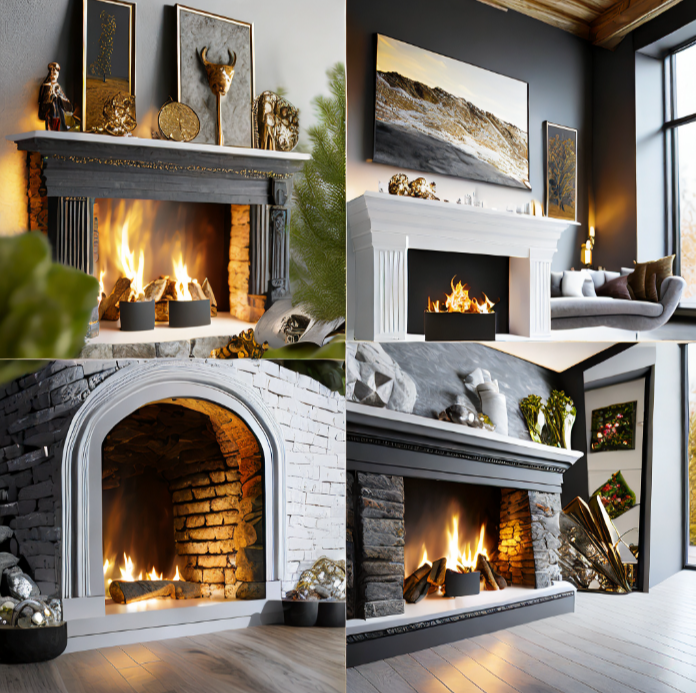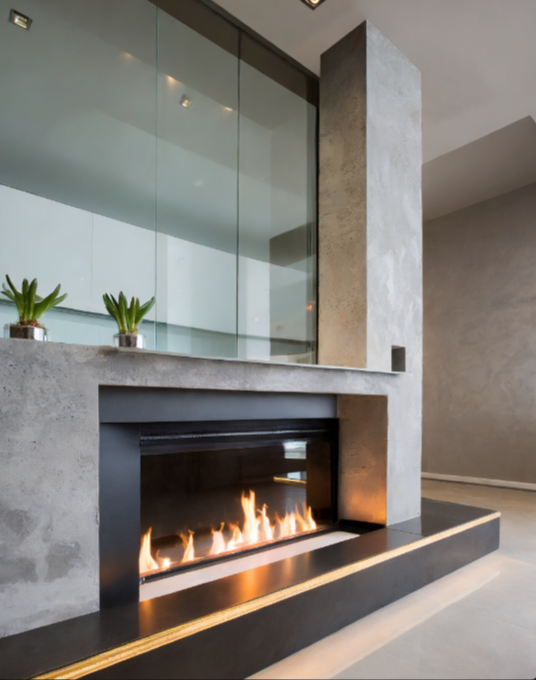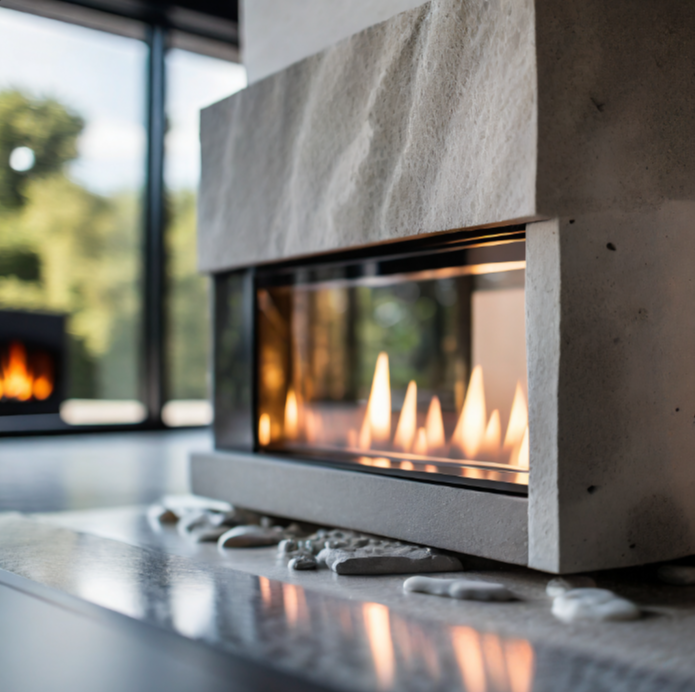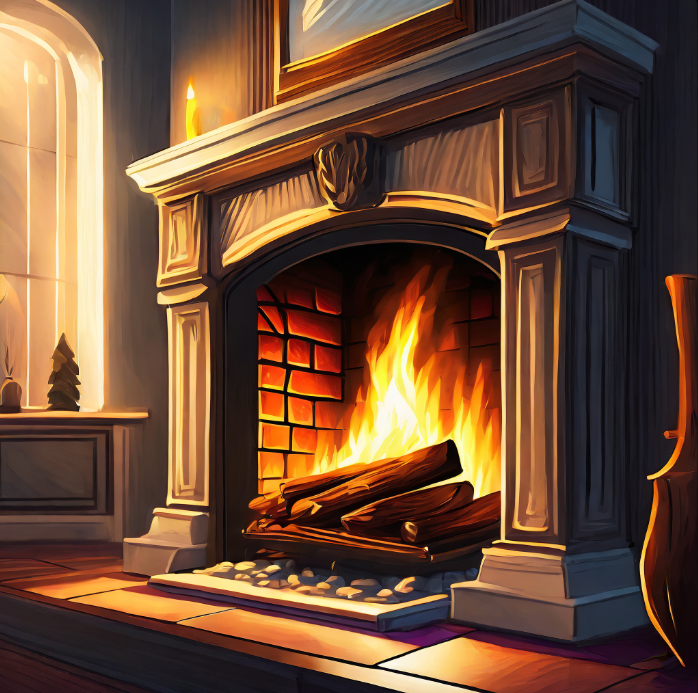As winter quickly cools down the northeast, there’s no better time to turn your attention to the heart of your home—the fireplace. A well-crafted fireplace mantel can elevate the entire ambiance of a room, working as a centerpiece for the room that exudes warmth and comfort. In this guide, we run through some quick tips through the art of fireplace mantel replacement, exploring the steps to transform your hearth into a cozy haven. Whether you’re undertaking this project for functional or aesthetic reasons, our tips and insights will navigate you through the process, ensuring that the winter chill outside is met with the comforting glow of a rejuvenated fireplace within.
Plan Ahead and Schedule Accordingly
Before starting the fireplace mantel replacement project, plan ahead and schedule the work during a period with milder weather conditions. Try to avoid extremely cold or snowy days to ensure a more comfortable working environment. Check the weather forecast to anticipate any challenges and plan for potential delays.
Temporary Heating Solutions
Since the fireplace may be temporarily out of commission during the replacement process, consider using alternative heating sources. Portable space heaters can provide warmth in the immediate working area, ensuring that the room remains comfortable for the duration of the project.
Protect the Surrounding Area
Cover the floor and nearby furniture with drop cloths or plastic sheets to protect them from dust, debris, and potential damage during the replacement process. If you’re working with tools indoors, take precautions to contain sawdust and maintain a clean workspace.
Use Quick-Drying Materials
Opt for quick-drying adhesives and finishes to expedite the installation process. This is particularly important during the winter when lower temperatures can extend the drying time of certain materials. Quick-drying products help minimize the time your fireplace is out of commission.
Seal Openings Temporarily
During the replacement, there may be gaps or openings in the fireplace area that could let cold air in. Temporarily seal these openings with plastic sheeting, tape, or other insulating materials to prevent drafts and maintain a comfortable indoor temperature.
Have a Contingency Plan for Unexpected Delays
Winter weather can be unpredictable, and unexpected delays may occur. Have a contingency plan in place, such as a temporary cover or barrier for the fireplace, to protect your home in case the replacement takes longer than anticipated.
Ensure Proper Ventilation
If you’re using adhesives, paints, or finishes that emit fumes, ensure proper ventilation. While it may be too cold to keep windows open for an extended period, periodically ventilate the area by opening windows and doors to allow fresh air to circulate.
Professional Assistance for Complex Installations
If your fireplace mantel replacement involves complex structural changes or installations, consider seeking professional assistance. Professionals have the experience and tools to handle intricate projects efficiently, ensuring a high-quality and safe result.
Enjoy the New Fireplace During Winter Evenings
Once the replacement is complete, take the time to enjoy your newly installed fireplace mantel. Enhance the cozy ambiance by decorating the mantel with winter-themed decor, creating a welcoming focal point for your home during the winter months.
By following these tips, you can successfully replace your fireplace mantel during the winter while maintaining a comfortable and warm living environment. Whether you’re tackling the project yourself or hiring professionals, thoughtful planning and execution will contribute to a successful winter fireplace upgrade.
Consider the overall style of your home, the aesthetics you prefer, and the size of the fireplace. Choose a design that complements the room’s decor and creates a cohesive look.
The duration of the replacement process depends on factors like the complexity of the design and the materials used. On average, it can take anywhere from a day to a few days to complete.
Removing a fireplace mantel involves carefully detaching it from the wall. Start by locating screws or nails, use appropriate tools for removal, and be cautious not to damage the surrounding area.
The cost of replacing a fireplace mantel varies based on factors such as materials, design complexity, and labor. On average, it can range from as low as $800-1,200 to a few thousand dollars.
Most towns in Connecticut require a permit to install a pellet stove, but pellet stoves are less regulated than traditional wood stoves since they produce fewer emissions. Check ordinances for your specific state and town.
Electric fireplaces just need occasional cleaning to keep the viewing glass free of dust and debris. This prevents obstructing the realistic flame effects.
Maintain at least 36 inches between combustible furnishings and the fireplace opening. Leave at least 6 feet clearance from a wood stove or other heating appliance.
Fireplace installation costs range from $3,500-$5,000 on average for a basic model. Luxury custom builds with high-end finishes can run $15,000 or more.
Yes, masonry fireplaces usually require a dedicated concrete foundation to adequately support their weight. Integrate these specifications early into design plans.
Tile, stone, brick, or other masonry flooring withstands radiant heat best. Adding a decorative rug over hearth flooring protects friends and family from potential burns.











